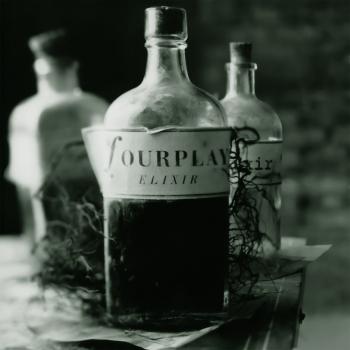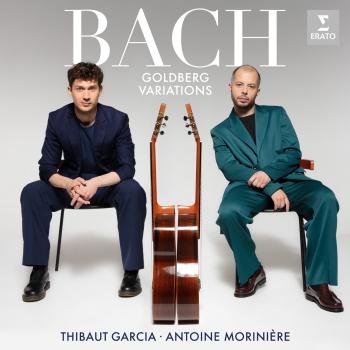
J.S. Bach: Piano Works Paulina Zamora
Album info
Album-Release:
2021
HRA-Release:
05.11.2021
Label: Delos
Genre: Classical
Subgenre: Instrumental
Artist: Paulina Zamora
Composer: Johann Sebastian Bach (1685-1750)
Album including Album cover Booklet (PDF)
- Johann Sebastian Bach (1685 - 1750): 15 Inventions:
- 1 Bach: 15 Inventions: No. 1 in C Major, BWV 772 00:59
- 2 Bach: 15 Inventions: No. 2 in C Minor, BWV 773 01:51
- 3 Bach: 15 Inventions: No. 3 in D Major, BWV 774 01:02
- 4 Bach: 15 Inventions: No. 4 in D Minor, BWV 775 01:06
- 5 Bach: 15 Inventions: No. 5 in E-Flat Major, BWV 776 02:20
- 6 Bach: 15 Inventions: No. 6 in E Major, BWV 777 02:06
- 7 Bach: 15 Inventions: No. 7 in E Minor, BWV 778 00:45
- 8 Bach: 15 Inventions: No. 8 in F Major, BWV 779 02:20
- 9 Bach: 15 Inventions: No. 9 in F Minor, BWV 780 00:49
- 10 Bach: 15 Inventions: No. 10 in G Major, BWV 781 02:01
- 11 Bach: 15 Inventions: No. 11 in G Minor, BWV 782 01:17
- 12 Bach: 15 Inventions: No. 12 in A Major, BWV 783 01:12
- 13 Bach: 15 Inventions: No. 13 in A Minor, BWV 784 01:13
- 14 Bach: 15 Inventions: No. 14 in B-Flat Major, BWV 785 01:35
- 15 Bach: 15 Inventions: No. 15 in B Minor, BWV 786 01:08
- 16 Bach: 15 Sinfonias: No. 1 in C Major, BWV 787 02:22
- 17 Bach: 15 Sinfonias: No. 2 in C Minor, BWV 788 01:18
- 18 Bach: 15 Sinfonias: No. 3 in D Major, BWV 789 02:39
- 19 Bach: 15 Sinfonias: No. 4 in D Minor, BWV 790 01:27
- 20 Bach: 15 Sinfonias: No. 5 in E-Flat Major, BWV 791 01:29
- 21 Bach: 15 Sinfonias: No. 6 in E Major, BWV 792 03:00
- 22 Bach: 15 Sinfonias: No. 7 in E Minor, BWV 793 01:09
- 23 Bach: 15 Sinfonias: No. 8 in F Major, BWV 794 03:54
- 24 Bach: 15 Sinfonias: No. 9 in F Minor, BWV 795 01:21
- 25 Bach: 15 Sinfonias: No. 10 in G Major, BWV 796 01:02
- 26 Bach: 15 Sinfonias: No. 11 in G Minor, BWV 797 03:11
- 27 Bach: 15 Sinfonias: No. 12 in A Major, BWV 798 01:17
- 28 Bach: 15 Sinfonias: No. 13 in A Minor, BWV 799 02:21
- 29 Bach: 15 Sinfonias: No. 14 in B-Flat Major, BWV 800 02:26
- 30 Bach: 15 Sinfonias: No. 15 in B Minor, BWV 801 01:32
- Chromatic Fantasia & Fugue in D Minor:
- 31 Bach: Chromatic Fantasia & Fugue in D Minor, BWV 903 11:55
Info for J.S. Bach: Piano Works
Bach’s famous and beloved Inventions and Sinfonias continue to captivate listeners, students and teachers today as they have throughout the generations. They are delightful discoveries playable by students of various ages and various stages of pianistic development, and provide an inexhaustible source of new ideas. Bach’s melodies sing, dance, and interact with each other and provide a path to understanding counterpoint, and specifically one of Bach’s favored forms, the fugue. These sparkling classics benefit from Paulina Zamora’s tender interpretations, as does the Chromatic Fantasy and Fugue. This is the third Delos album for the Chilean- American pianist, described by Gramophone as “a sincere and persuasive musician.”
"They would have been conceived for the harpsichord and Chilean-American pianist Paulina Zamora plays them as such. Highly articulate, punctilious, with clear distinction of individual parts and generally rapid tempos. Bach never bothered to leave tempo markings for posterity, so musicologists, editors and publishers down the line took it upon themselves to, based on strict criteria, establish general tempo and dynamic guidelines. Now let's take the Invention No. 8 in F major, BWV 779, one of the more lively in the set, as an example. My edition suggests 120 to the quarter note but Paulina Zamora seems to be closer to the 144 mark suggested by the Czerny edition. Compare that with the early Columbia recording by Glenn Gould at a sluggish 100 and Zamora sounds like she's flying. She dives right in and doesn't come up for air until the very end a mere 45 seconds later, which makes for an exhilarating performance. She also very well defines the leading lines as they move from treble to bass clef, from hand to hand, and keeps our ears focused on the motivic cells at all times, as in the Invention No. 5 in E-flat Major, BWV 776. Bach's more lyrical, emotive side is also well projected in her dignified and highly expressive interpretation of the Sinfonia No. 9 in F Minor, BWV 795.
The Fazioli piano used for this recording is ideally suited to Bach's clarity of thought, with a pellucid upper register and a solid and well defined bottom end which complement each other." (Jean-Yves Duperron, classicalmusicsentinel.com)
Paulina Zamora, piano
Paulina Zamora
Winner of the Chilean Art Critics Circle Award 2016, Dr. Paulina Zamora stands out as a highly sought-after performer and scholar nationally and internationally, in the areas of Piano Solo, Soloist with Orchestra, Chamber Music, Collaboration, Teaching, Research, Administration and Academic, Designing and Structuring.
In 2010 she graduated from her Doctor of Music degree from Indiana University Jacobs School of Music where she received the legacy of the legendary musicians György Sebők in Piano and Janos Starker in Chamber Music, both heirs of the Hungarian school of Franz Liszt and Béla Bartók.
From my teacher György Sebők I learned the integration of the technical-mechanical and musical-stylistic elements. With Sebők I completed a five-year cycle of teaching during which I learned the use of weight in order to obtain a beautiful piano sound, and how this should be applied to each of the styles and needs of the works. That is, the integration of the whole body in the piano performance and the full connection of music with the physical feeling. I experienced that the technical solution is always justified by the music. As a pianist, Sebők expressed himself physically through natural movements that emanated from the melodic-rhythmic design of the musical motifs. The impact of seeing and hearing him was very strong emotionally: it was like relating to a being from another world. He was a wizard of sound. When he played the piano his sound was powerful, precise, transparent, and connected the earthly world with the spiritual. His playing was integral, connected and fluid. Sebők in his classes taught me that in order to surrender to music completely I had to understand that life was much more than myself: it took me out of myself and helped me to transcend myself in such a way that music received me with much generosity and open arms.
Janos Starker taught me the sense of responsibility as a musician and as a teacher. After two years of collaborating with his students in Indiana, he rewarded me by choosing me as the official pianist of his cello Studio. The discipline that I acquired in these five years of work with him is incomparable: even today I can play the entire cello repertoire: I know every note, every phrase, every articulation and I even know what the technical problems of string instruments are, particularly the cello. At the same time Starker taught me types of piano playing, suggested fingerings and ways of phrasing. He was a very good pianist himself! With him I also learned chamber music concepts, stylistic definitions, the use of the rubato and the demand to be a collaborative pianist. My experience reached its peak when he invited me to collaborate in recitals with him on a tour of Europe.
My first years in the United States took me to Rochester, where I earned a Master of Music degree from Eastman School of Music, under the tutelage of Rebecca Penneys. With her, I did exhaustive technical work where we reviewed each of the technical tools that a soloist pianist needs. With her I faced the most challenging piano works in the repertoire, showing me that every difficulty was possible to overcome through the precise selection of technical tools. Rebecca made me aware of the instrumental sound capacity, of the importance of style and with her, I was able to develop the physical aspect of the movement of music.
I obtained a Bachelor’s Degree in Superior Interpretation with a mention in Piano from the Faculty of Arts of the University of Chile under the tutelage of Professor Mercedes Veglia Müller, heiress of the piano school that Claudio Arrau founded in New York, under the direct guidance of his assistant Rafael de Silva. Mercedes trained and guided me in my initial stage of learning both in the musical-stylistic areas and in the preliminary technical precepts. I remember her overwhelming personality, her strength as a teacher, her professional integrity and her contagious and infallible humor that filled anyone with joy.
Booklet for J.S. Bach: Piano Works










